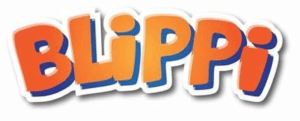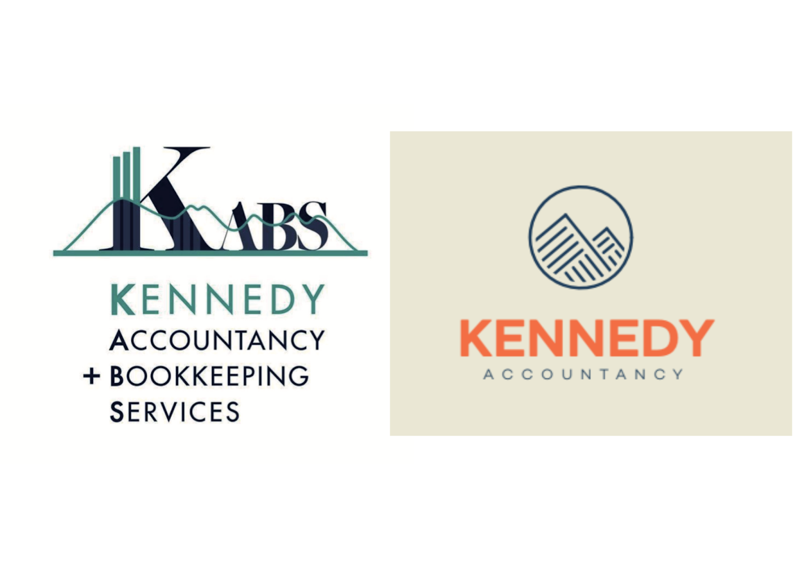Having a friend design your logo feels like a savvy decision when you’re just starting out on your business journey. We’ve had many accountants come to us with the same story: they were overwhelmed with all the steps involved in getting a business off the ground when their lovely friend came along and offered to take one thing off their plate.
You may have let your friend design your logo to:
- Give them experience: Maybe your friend has a day job in graphic design or they studied it in school. Maybe they just have an Adobe subscription they want to make the most of. Whatever their qualifications are, you didn’t see any harm in giving them a chance to pad their portfolio and practice their skills with your logo design.
- Save Money: it’s hard to pass up a friends and family discount, especially at the start of your business journey when you’re already strapped for cash and having to decide when and where to invest your limited funding. Saving money on your logo design meant you had more in your pocket to put towards office rental, equipment, advertising and other elements you felt were more important for growing your business.
- Save Time: With all the demands of starting a new business, turning to a friend for help meant you could clear one thing off your plate and turn your attention to other matters.
- Represent the Real You: you’ve heard that a logo is meant to represent you, and who knows you better than a friend? Why waste time in a meeting with a logo designer or marketing company when your decades-long buddy is already super familiar with you and your personality?
We understand the thought process behind all these reasonings. And, even if it came from an untraditional route, you still have a logo, right? You’re excited to start plastering it across your social media and website and investing in swag to show it off. And you’re not even wrong to do so, because right at the beginning you don’t even know who you are yet.
After all, a logo is part of your brand, sharing who you truly are to a world who doesn’t know you yet. So what kind of a message do you get designed when you’re on day one? You figure you’ll sort it out later, and you’re entirely right. And now, it’s later.
The right logo will make your ideal clients come easier and faster
In order to know if your logo is the right one for your business, you’ll first need to understand what the purpose of a logo is. In the words of our Head Brand Designer and certified branding genius Col Gray:
“Many people think it’s a logo’s job to promote a product or service. This isn’t the case. The reason people think this is because the logo is doing its actual job, and that job is to quickly identify with a brand.”
You can think of a logo as the cover of a book. Before you read the story, a cover doesn’t have much meaning, but this doesn’t mean it’s without a purpose. A cover leaves an impression. It gives you an expectation of what the book holds, be that horror or adventure or romance. It catches your eye and, at the end of the day, a cover is what compels you to pull that book off the shelf and give it a chance.
Then, once you’ve read the book, you suddenly see a whole new meaning within that cover. You can recognise the themes and hidden symbols in it. The people on the cover are no longer random illustrations but characters you know and love (or hate). And, whenever you think of that story again, the cover is what pops into your mind. Something that was once just an intriguing illustration has come to represent an entire story.
That is the power – and purpose – of a logo. Buyers make 70% of their buying decision before they even get in touch. Just like a book cover, whatever messages or impressions your logo and branding give a prospective client will cause them to reach out or turn away. To take your book off the shelf and give your story a chance or pass it on by.
Of course, there are times we look past an ugly cover. Or a boring cover. Or one that gives an impression of a story we’re not interested in. And, sometimes, we discover a marvellous story inside. You can still get new clients with the wrong logo, but the best clients will come easier and faster when you find the right one.
Your logo embodies your brand
Your logo is the constant of your business and brand. But, just like a book cover has no real meaning without the story behind it, a logo has no real meaning without a brand. Your brand is your story. Think, for example, of the Nike swoosh:
When we see this image today, it carries a lot of meaning: Agility, athleticism, excellence, inspiration. You probably immediately thought of the Nike tagline – Just Do It – and maybe even a reel of one of your favorite Nike commercials started playing in your head. That’s a lot for one little swoosh to incite.
But, when Carolyn Davidson drew the swoosh back in 1971, what did it mean?
Nothing. It was simply one of out six drawings she presented to Phil Knight as concepts for his new shoe company’s logo.
All the meaning behind Nike’s logo has come with their brand, with their story, that they have spent decades perfecting and portraying in all their marketing. Before it had its story, the swoosh had no meaning. But, like a book cover, it could still leave an impression.
Your logo tells your clients what to expect
A book’s cover can set your expectations for what the story inside holds. A cover with a swooning woman in Fabio’s arms gives you the impression that this story will be a romance. A cover that shows the mist-shrouded streets of London and a hunched detective with a magnifying glass to his eye tells you the story will be a mystery.
In the same way, your logo, even without a brand story behind it, sets expectations. The Nike swoosh is an energetic symbol. It gives a sense of movement and speed. The Nike brand wouldn’t carry as much punch if it was embodied by a logo that was a straight, stagnant line.
This is why your logo design is far more important than you might have thought when your friend first designed it for you. A logo conveys a message, and if yours doesn’t convey the right one for your brand, your ideal client won’t stick around to learn about the rest of your story. They’ll take one look at the cover and put the book back on the shelf.
When designing a logo, our graphic designers consider several factors – typography, colors, shapes, layout on a page – in order to create something that embodies and communicates all the elements of your brand. Think of, for example, popular children entertainer Blippi’s logo:
The bright orange, the bubbly font, the way the type seems to leap off the page – all of these elements communicate the fun and energy of Blippi’s brand. You would definitely trust Blippi to entertain your child for a few hours while you tidied the house. But would you trust Blippi to sell you a luxury perfume?
No. Of course not. Because that’s not the message this logo is conveying.
If you look at the logo your friend designed you, what sort of messages is it conveying? And, most importantly, is it the messages you want your brand to convey? Who does it appeal to?
Your logo is not for you
When Nike co-founder Phil Knight first saw Davidon’s design of the swoosh, do you think he started jumping for joy, certain they had just hit branding gold?
Nope. Instead, he said, “I don’t love it. But I think it’ll grow on me.”
This is an incredibly common reaction for business owners when they’re first presented with any part of their brand story. You may not be wowed by your logo when you first see it because your logo is not for you. In fact, your whole brand is not for you. It’s for your clients. And not the clients you have, necessarily: the clients you want. The best clients. Your perfect clients.
As Donald Miller says in ‘Building a Story Brand’, “Your client is the hero. You’re the guide. Make your brand about them.”
When we talk about the story behind your brand, remember your client is the hero of that story. Not you. When we talk about what messages your logo is conveying, we mean what messages it’s conveying to your clients. Not you.
The purpose of a logo is to speak to your clients and embody the story you wish to tell them.
Now you know the purpose of a logo, ask yourself: does my logo do its job?
Does your logo that your friend designed fulfil its purpose? Does it:
- Represent the real you?
- Summarise many points of your overall brand?
- Communicate your values and feelings?
- Appeal to your perfect clients?
- Cause them to hurry up? (Read this article about whether your brand helps people to hesitate or hurry up)
If you’ve answered anything less than a resounding YES to all these questions, then your logo is not doing its job and our recommendation is that you get a new one designed. You can read more about what that process can look like and the benefits of it in a blog by one of our graphic designers, Chryzia.
Even if you’ve identified your logo isn’t fulfilling its purpose, you might still be hesitant to start working on a new one. You might be thinking, “I love my logo!” or “All my friends love my logo!” You might have an emotional attachment to that historical logo, or a personal connection to the person who helped you design it. “But she was my friend! She’d be so hurt if I changed it!”
But remember – your logo is not for you. It’s not for your friend who studied design. And, unless your family and friends also happen to be your ideal client, it’s not for them either. Your logo is for your clients. You want to create one that they’ll love and connect to, even if that means retiring a logo that you love.
Another common reason you hesitate to start building a new brand or identity is a worry you will lose recognition. This is the position one of our clients, Karen Kennedy, was in when she first started working with us. Though she had only started her business a few months ago, already everyone in her community – which was where her ideal client was – knew her by her existing name and logo. She worried it was too soon to change and that people would lose that instant connection they had between her old logo and her.
Through the five sessions of the Foundations Workshop Karen went through, she learned more about the power behind a logo and brand. She drew on some of the things she’d learned in Accelerator, too. And she realised her old logo being recognisable wasn’t the point, because as it was, her existing logo wasn’t conveying the right message. It wasn’t embodying Karen, her story, and her business. She was recognisable, but for the wrong things. Her old logo said “traditional accountant”, and was difficult to understand. It wasn’t who she truly was.
Recognition means nothing if you’re being recognised by the wrong people or for the wrong reasons. It’s worth taking the time to build the type of recognition you want with the type of people you want to work with. When your logo tells your story, you’ll have more of your ideal client reaching out to you sooner.
If your logo needs a redesign, focus on communicating other elements of your brand in the meantime
So your logo needs a redesign.
Don’t panic.
This doesn’t mean you have to rush now to deactivate all your social media accounts, delete all your blogs, and shutter your business until you’ve got the right logo in place. Karen Kennedy, was still growing her client base even as she was using what she then realised was the wrong logo and we were working on her new branding and logo behind the scenes. She took the time to prioritise communicating other elements of her brand.
The cover was wrong, but Karen still had her story. She identified the themes of that story that were most important to her – community, positivity, time with family – and she put her efforts and time into capturing these things in all the marketing material she put out. She shared photos on Instagram of her children and beautiful Highland sunsets and posted videos and infographics with helpful tips for the small business owners she was trying to connect to.
This also helped make the transition to her new logo feel that much smoother. When Karen’s new logo was revealed, it was an incredibly powerful moment for all her clients and prospects whose attention she had worked hard to capture – her wonderful story was finally getting the cover it deserved! They made the connection. They already knew who Karen, and Kennedy Accountancy, was, because they had experienced it through all this content she was creating and sharing. So their warming to the new logo, and their welcoming of it in Karen’s marketing, was a much faster process because it wasn’t a shock to the system. It made sense. It fit.
You’ll be able to read Karen’s story about how she identified and built her brand in our case study which is coming soon!
Once you’ve gone through a branding process and are confident your logo embodies your story, it’s time to start implementing
There are so many fun – and important – things you can do once you’ve gotten your logo nailed down and are confident that it fulfils its purpose.
- Establish brand identity guidelines: Your logo is your constant. It’s the one thing that won’t change no matter how your marketing takes shape. Make sure you identify elements like colors, fonts, spacing and placement on a page so wherever your logo is implemented, it stays consistent.
- Give it an introduction: give your logo the entrance it deserves! Devote a whole Instagram post to it, write a blog about the journey you went to get there, send an email to all your clients to explain why this logo rebrand happened and what it means for them. We’ve even had clients send out postcards with their brand new logo and branding.
- Start building recognition: Get your logo implemented across your social media pages, as profile pictures or headers, and incorporate it into your website. Digital implementation is cheapest because all it takes is the proper logo file and some tweaking to get the layout right.
- Invest in swag: If you want – and can – go bigger, there are so many fun ways you can show off your new logo: business cards, decals for your office wall, stickers for your laptop, water bottles, hoodies. We’ve even got PF branded hot sauce! As long as you stay consistent and on brand, the sky’s the limit with what you can do with your logo. Have fun with it. Show it off.
You didn’t know what your story was when you first started your business. Now, whether you’re weeks, months, or years in, you still may not know. And if you don’t know your story yet, you can’t design a cover that embodies it.
That’s the purpose of our Foundations Workshop – to guide you through building your brand and creating a marketing plan that will bring you the very best clients you love to work with. You deserve to have your story told. Book Foundations here.





